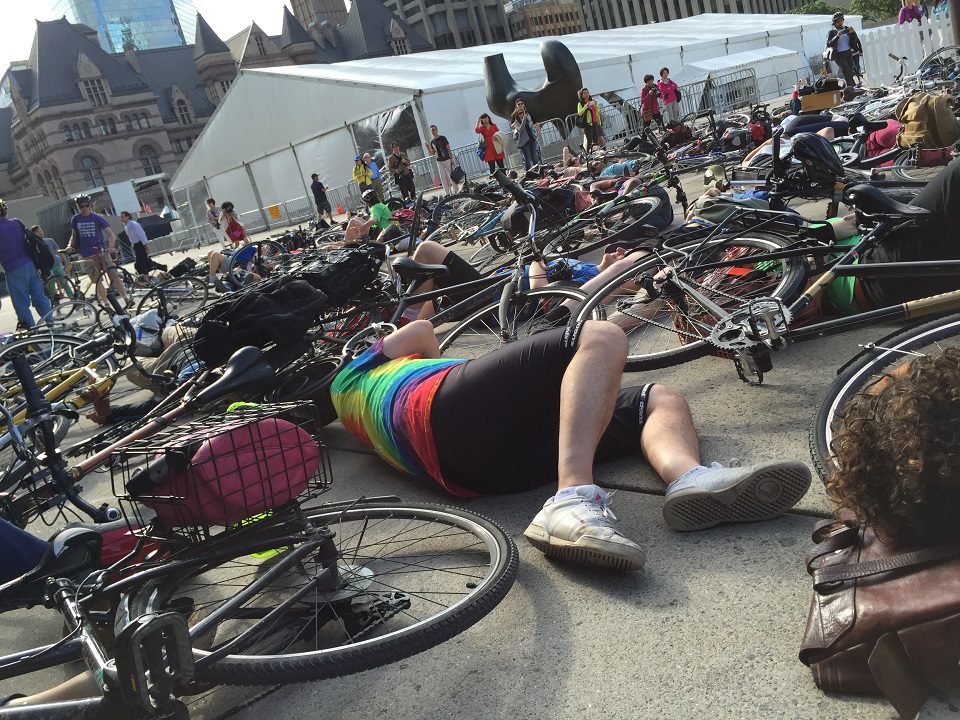Toronto cycling advocates stage “die in” at city hall
As Canadian Cycling Magazine reported on June 18, cycling has been an increasingly harrowing experience in Toronto this year, according to the numbers.


As Canadian Cycling Magazine reported on June 18, cycling has been an increasingly harrowing experience in Toronto this year, according to the numbers.
Those numbers reveal a tragic surge in road fatalities in 2015. 31 people in all have been killed in the last six months, among them 21 pedestrians and three cyclists, with those three deaths happening during a two-week period. Police and city officials point to distraction as a principal contributor to that string of casualties, but for the 100 cyclists who congregated in protest at Toronto’s Nathan Phillips Square at 8:30 Friday morning, the cause is more systemic: a lack of infrastructure for bikes, and a civic disregard for cycling in general.
“The goal of today is to send a very clear message to city hall that we need greater action to reduce road fatalities,” said Jared Kolb of Cycle Toronto, a cycling advocacy group in the city. While proposed projects for the downtown core have been encouraging, real progress, advocates say, has been coming up short.
Early Friday morning, a cross-section of those advocates gathered in the shadow of city hall to send that message. Laying down their bicycles and bodies in silent protest, cyclists called on Toronto City Council to officially adopt an uncompromising Vision Zero policy of zero road fatalities, an increase in the city’s cycling budget to $20 million, and the introduction of what they call the Minimum Grid — 100 km of separated bike lanes, to be built throughout the city.
“It was powerful and emotional to take part in this action,” said Toronto’s Yazmin Ann Shroff, a Toronto cyclist and demonstrator at Friday’s die-in. “Toronto needs to support the modes of transport that will reduce the burden on its finances and infrastructure.”
“This is such an important issue for urban futures. Complete streets are the way of that future, as is being shown in other progressive cities around the world.”
